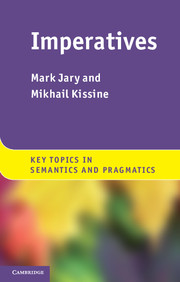Book contents
- Frontmatter
- Contents
- Acknowledgements
- List of abbreviations and notation
- Introduction
- Part I The data
- Part II The theories
- An opinionated conclusion
- Appendix A Possible worlds and semantics
- Appendix B Modality in possible-word semantics
- Appendix C Stalnaker’s common-ground model of assertion
- Glossary
- References
- Index
Appendix A - Possible worlds and semantics
Published online by Cambridge University Press: 05 July 2014
- Frontmatter
- Contents
- Acknowledgements
- List of abbreviations and notation
- Introduction
- Part I The data
- Part II The theories
- An opinionated conclusion
- Appendix A Possible worlds and semantics
- Appendix B Modality in possible-word semantics
- Appendix C Stalnaker’s common-ground model of assertion
- Glossary
- References
- Index
Summary
In several places of this book we use locutions like ‘a possible world where p’ is true or ‘being true in a possible world’. Furthermore, the notion of possible worlds is at the core of two theoretical tools that are used by some theorists to construct a semantics for imperative mood: Kratzer’s theory of modality and Stalnaker’s conception of context. These are summarised, respectively, in Appendix B and C. Here we will attempt to provide you with an intuitive understanding of the use of possible worlds in semantics. While we hope that it will be sufficient to grasp the matters addressed in the book, bear in might that by no means should this appendix be taken as a tutorial in intensional semantics (see, for instance, Chierchia and McConnell-Ginet (1990); Heim and Kratzer (1998)).
In truth-conditional semantics, the meaning of a sentence is given by the conditions under which it is true. Furthermore, this meaning is compositional, in the sense that the meaning of the whole sentence is a function of the meaning of its components. Take (1).
- Type
- Chapter
- Information
- Imperatives , pp. 294 - 296Publisher: Cambridge University PressPrint publication year: 2014

